Setup time: 4 Min
Create Email Integrations
- Select
Integrationsfrom the sidebar menu. Click on the ‘Inbound’ tab. - Fill in the ‘Display Name’ field with your desired integration name, such as ‘My Email Integration’.
- Choose your team from the ‘Team’ dropdown menu.
- Select ‘Email’ as the integration type.
- Finally, click on the
Create integrationbutton to complete the setup.
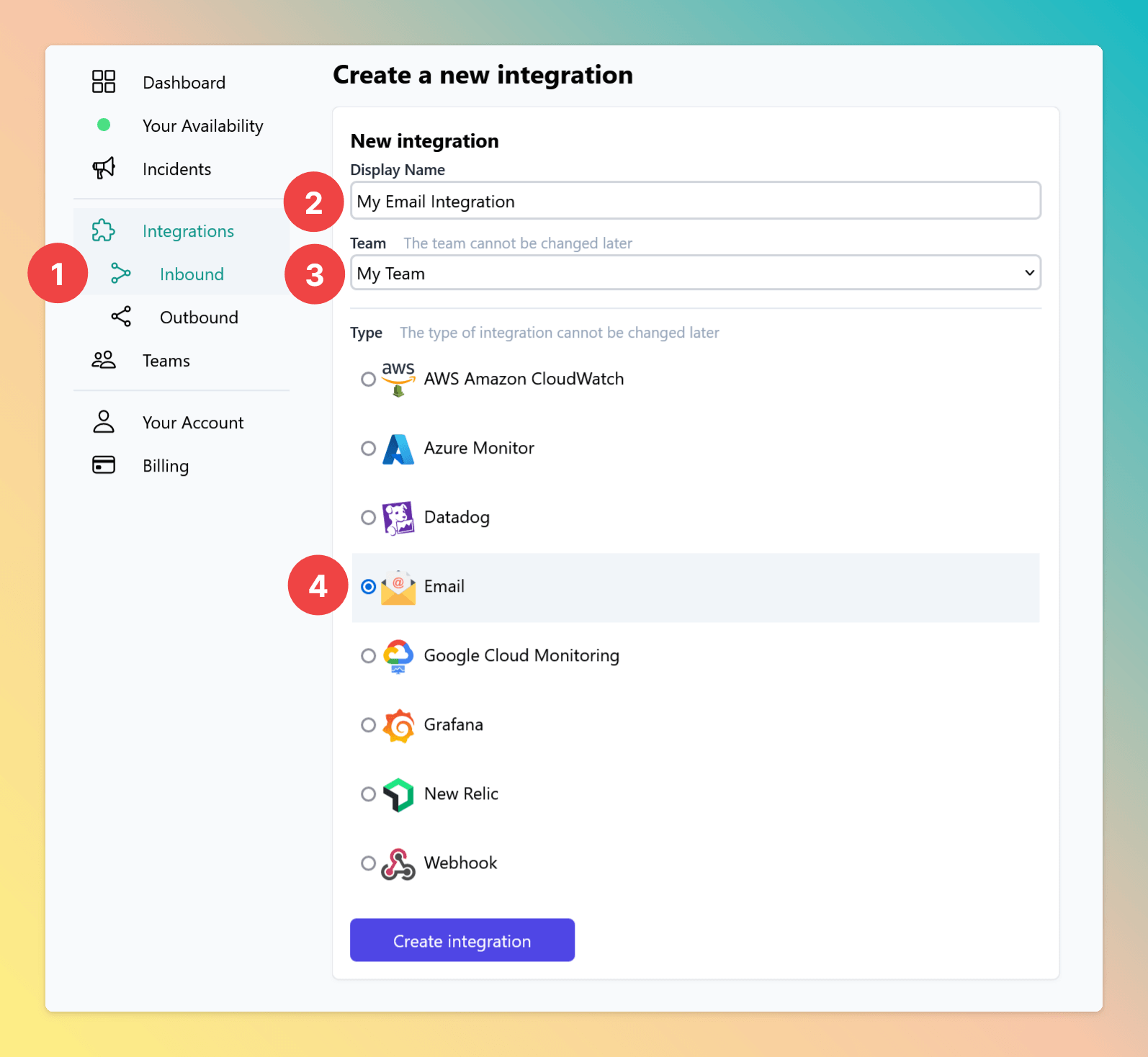
Individual Email Recipient
- Locate the unique email address under ‘Email Integration’—this is the address you’ll use to send emails that automatically create incidents in the integration’s team. If you prefer to use a different email address, you can set up aliases in here.
- Observe that the ‘Latest payloads’ section is currently empty, indicating that no emails have yet been sent to this unique address.
- Refer to the ‘Test Payload’ section for the format your email should follow to ensure proper incident creation within All Quiet.
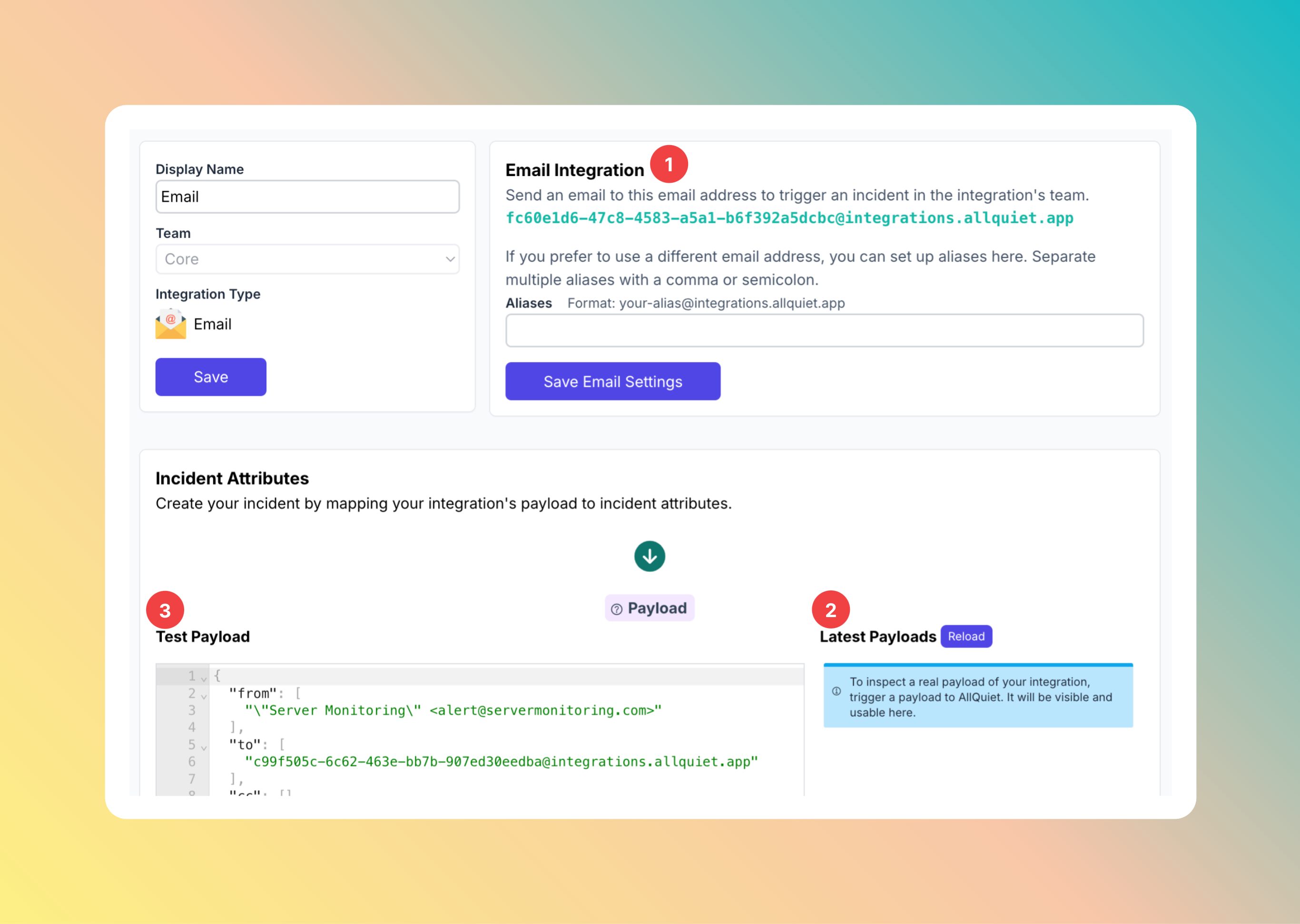
Send a Test Email
Begin by opening your preferred email client to compose a test message. This is simply a dry run to understand how emails are turned into structured incident reports in All Quiet. The exact content isn’t important—it’s just to illustrate the process. Once your email client is open, follow these steps:- Compose a sample email, entering a subject such as ‘Incident: High CPU consumption on prod-app-01’ to represent the type of incident you’d like to report.
- In the email body, draft a mockup of incident details, for instance, identifying the server, the environment it’s in, and a brief description of the issue, like ‘CPU > 75%’.
- Send this sample email to the unique email address generated by your All Quiet email integration setup.
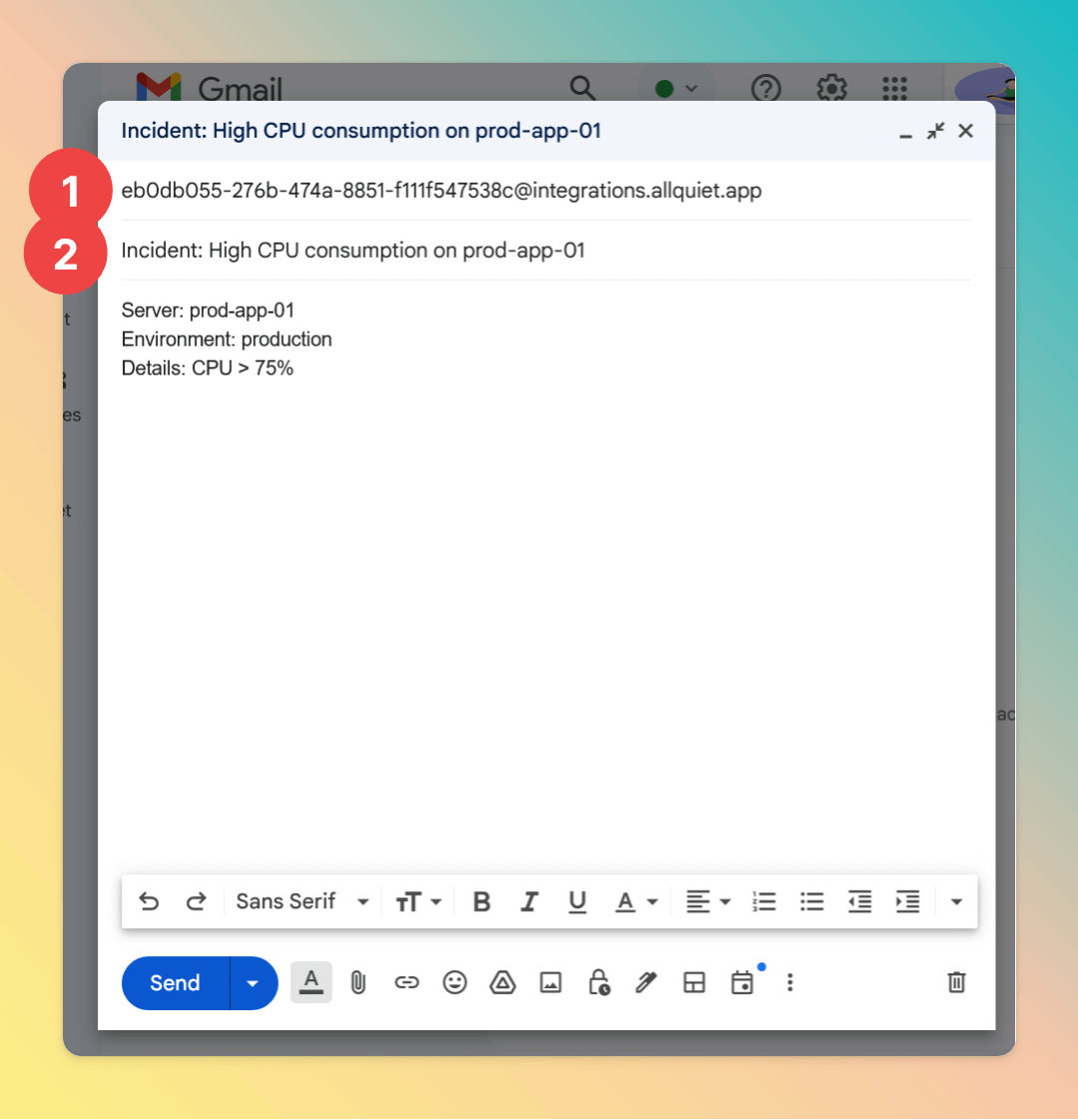
Inspect Email Payload
- Click the
Reloadbutton to fetch the latest email payloads received by the All Quiet platform. - Select the most recent payload from the ‘Latest payloads’ list to view its details.
- Review the loaded payload in the ‘Payload Example’ field, which now contains the actual data sent from your email client, including fields such as ‘Message-ID’, ‘Subject’, and ‘To’.
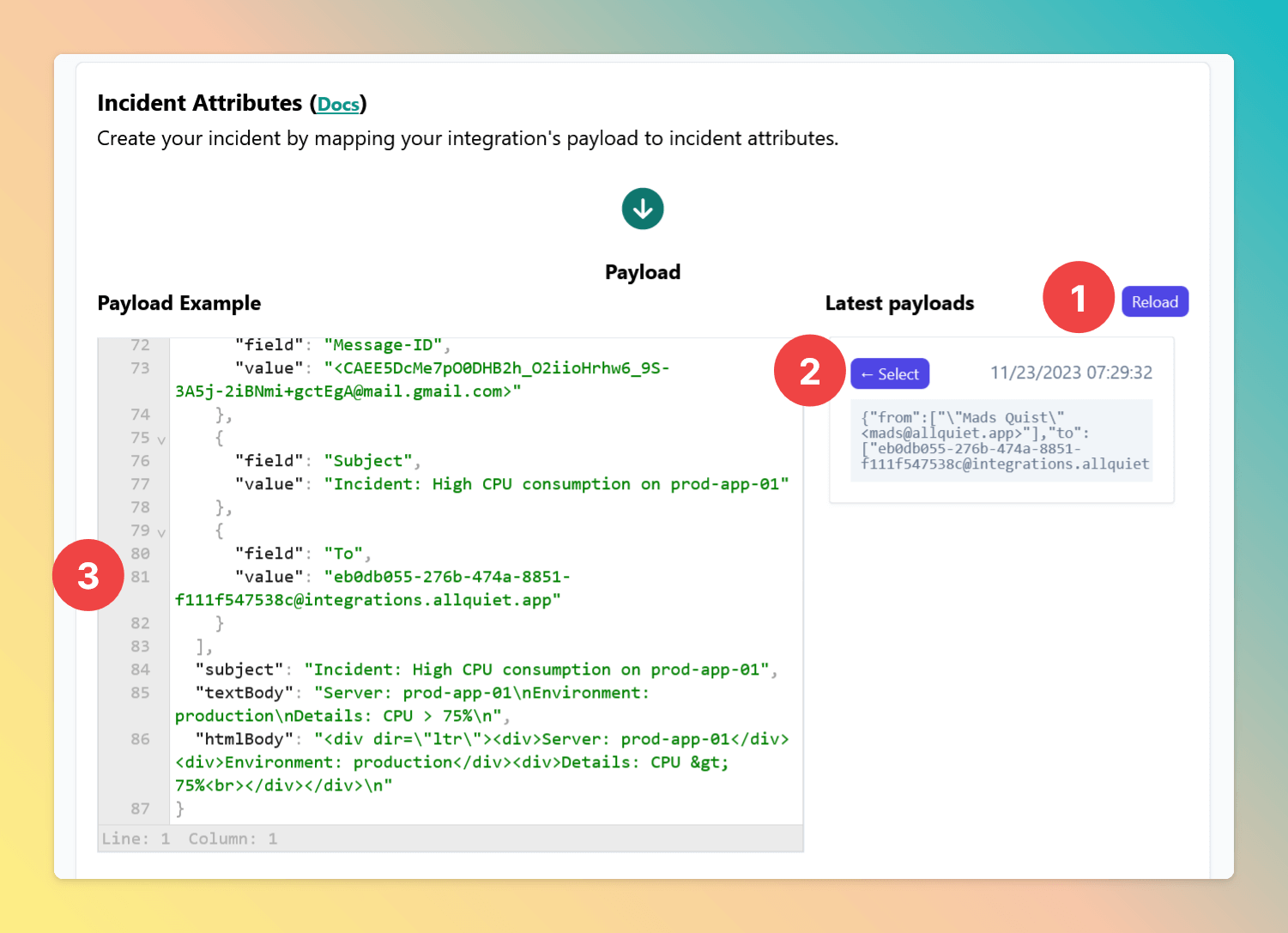
Map Payload Attributes
- Review the attribute mapping configuration in section (1), which specifies how email content is mapped to incident attributes. In this example, the
Statusattribute is extracted from the subject line of the email using a regular expression. - Examine the
Serverattribute mapping, which pulls information directly from the email’s text body to populate the incident fields. - Look at the incident preview in section (2) to verify that the mapping has correctly transformed the email content into a structured incident, displaying fields such as
Server,Environment, andDetails.
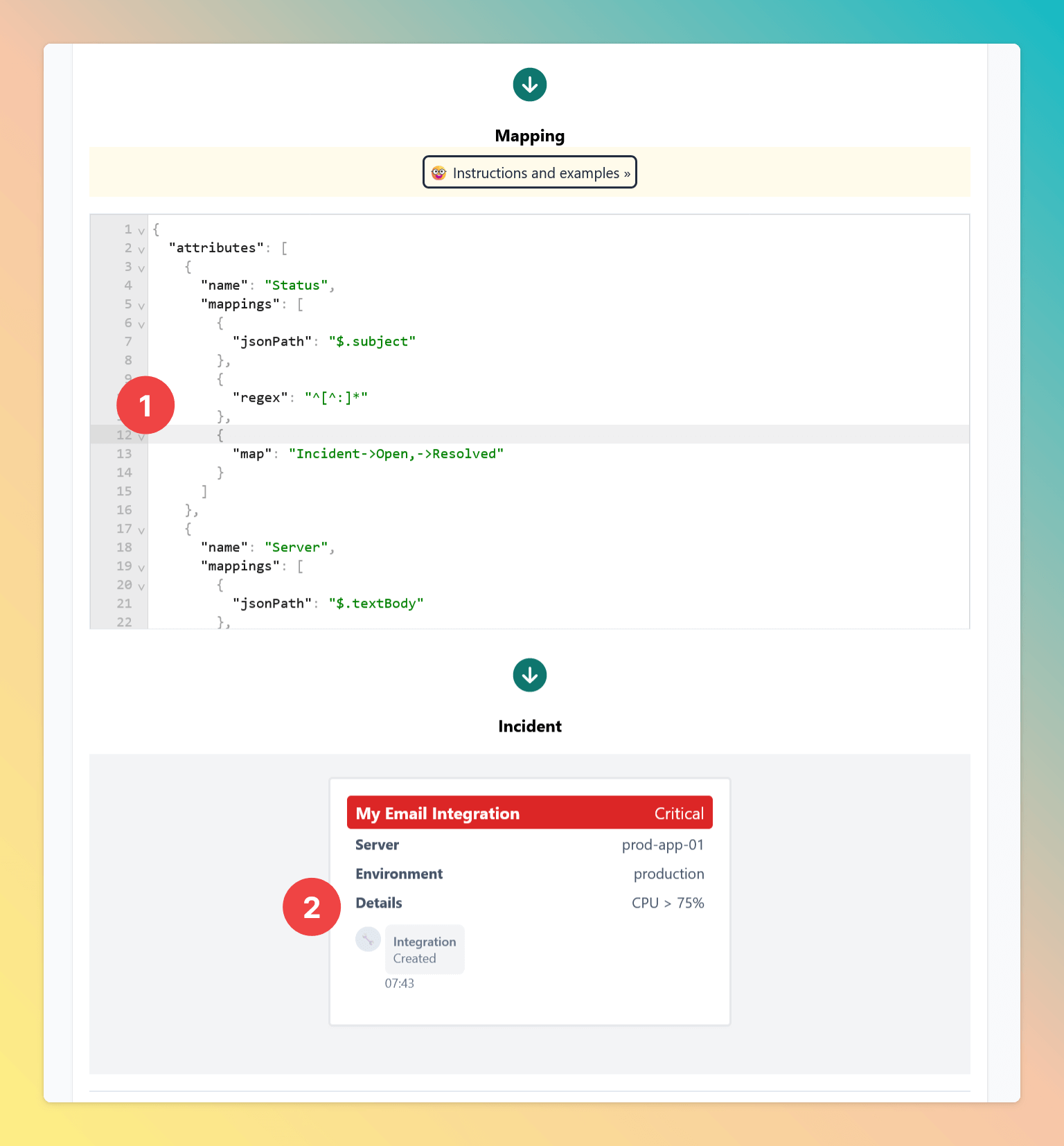
Attribute mappings have simplified transforming standard emails into structured incidents in All Quiet, bridging the gap between observability alerts and All Quiet’s incident management for a smoother workflow.